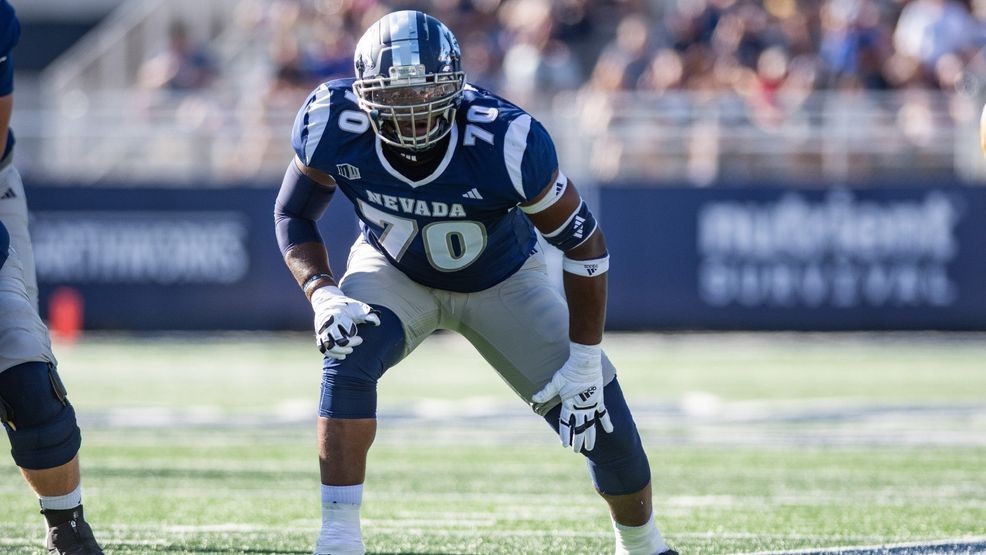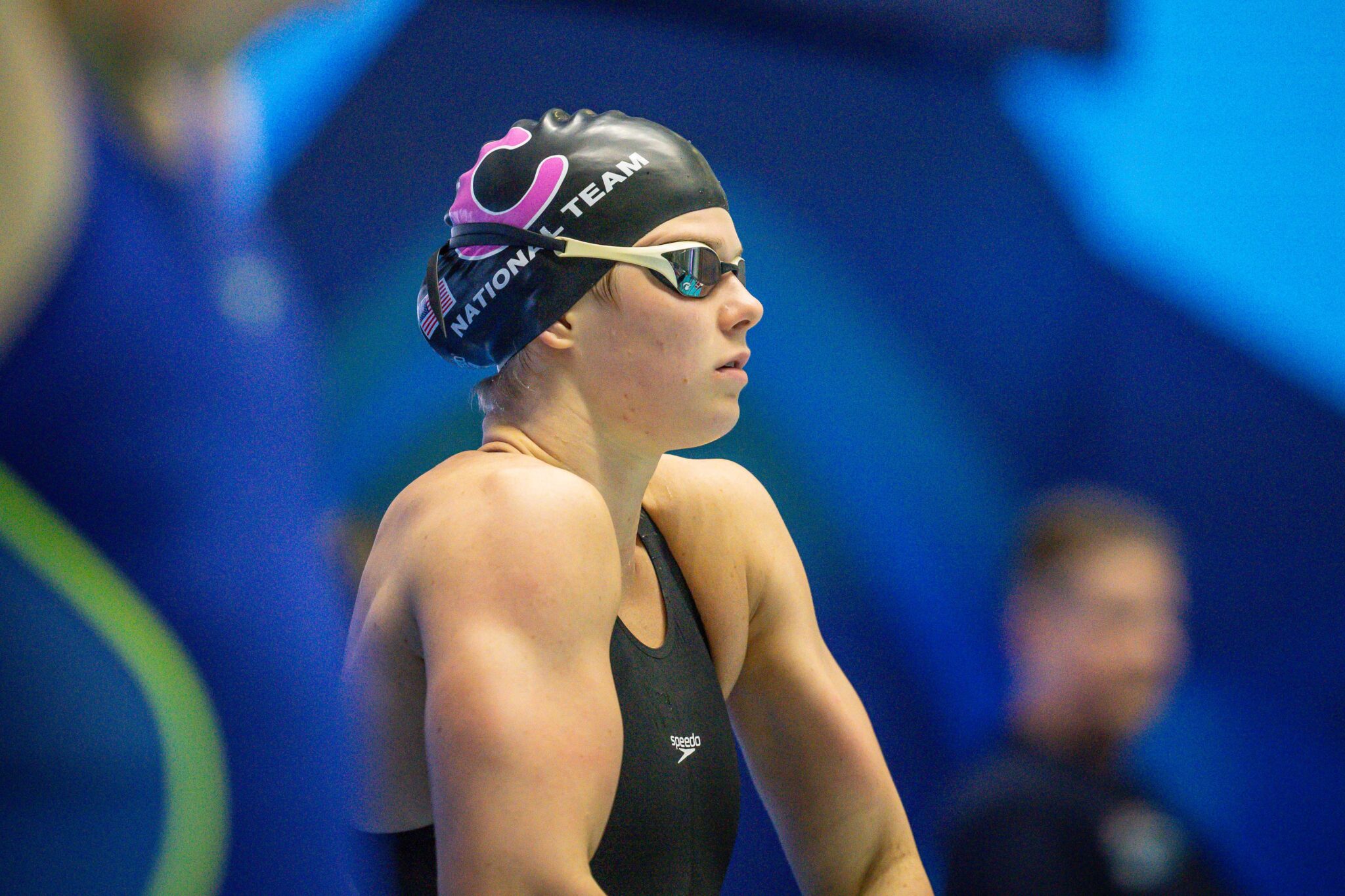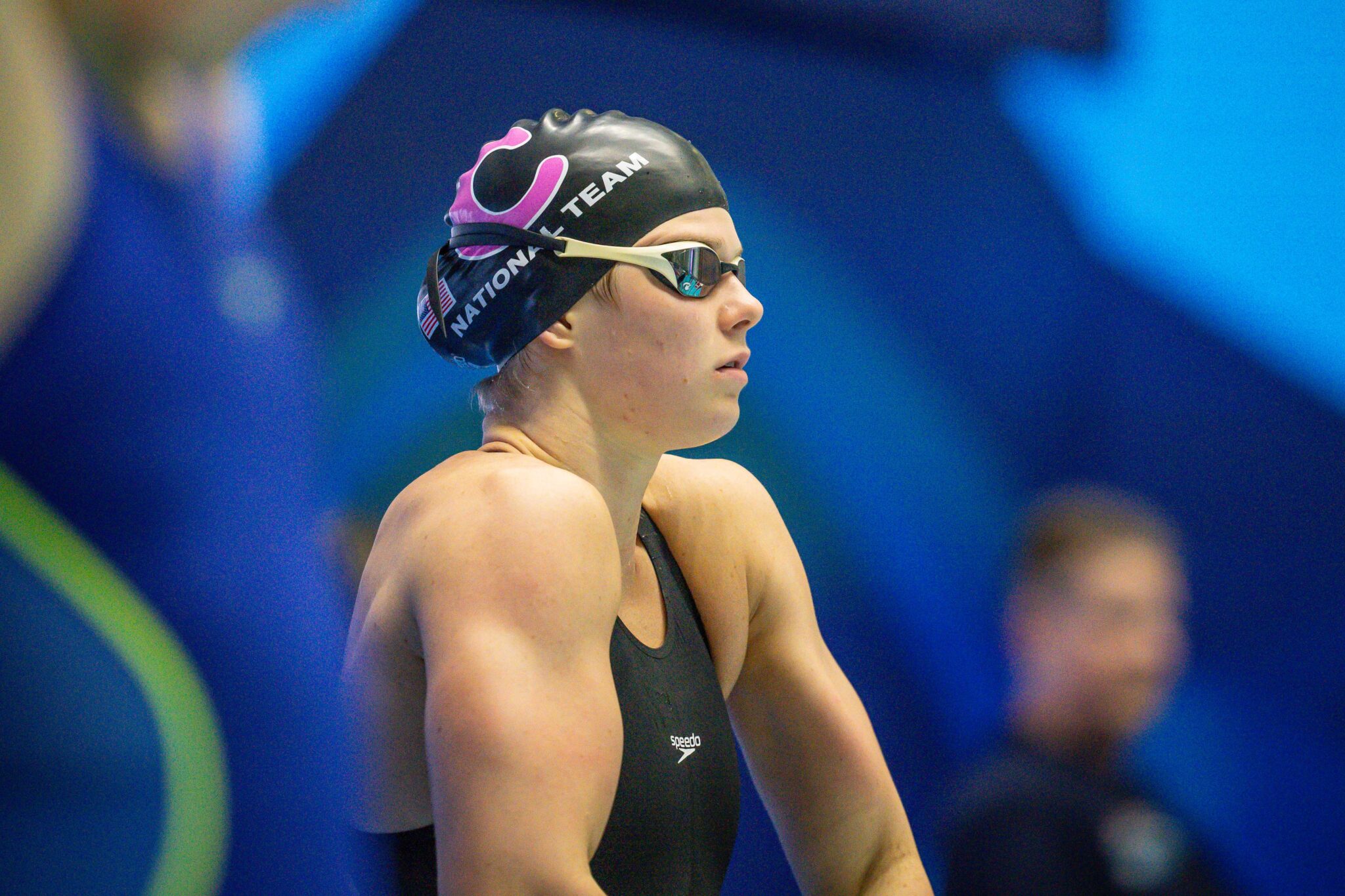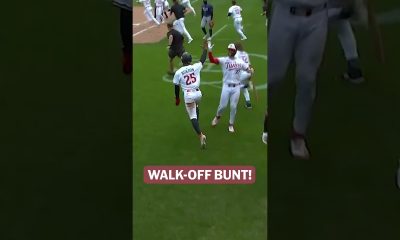NIL
How Nevada’s Isaiah World became projected first-round draft pick after transfer to Oregon
Players transfer for a number of reasons. The top one these days is money. And while many might think those transfers are for instant-impact cash, there’s also an element of future revenue involved. A good example is Isaiah World, the former Nevada offensive tackle who will spend his final college season at Oregon. In ESPN’s […]

Players transfer for a number of reasons. The top one these days is money.
And while many might think those transfers are for instant-impact cash, there’s also an element of future revenue involved.
A good example is Isaiah World, the former Nevada offensive tackle who will spend his final college season at Oregon. In ESPN’s first 2026 NFL mock draft, published this week, World was projected at 23rd overall to the San Francisco 49ers.
ESPN’s Matt Miller writes: “Many thought the 49ers would draft the eventual successor to All-Pro left tackle Trent Williams, who turns 37 in July. But San Francisco passed on tackles in the 2025 draft, so that need still exists. World transferred to Oregon after dominating at Nevada, and the 6-foot-8, 310-pounder has all-world potential with his elite reach, elite agility and experience. The 49ers need to get younger at core positions, and left tackle should be atop their wish list.”
I’ll almost certainly guarantee you World would not be a projected first-round draft pick had he stayed at Nevada for his senior season, and that’s no knock on the Wolf Pack. But World was never even an all-conference player during his three years as a starter for Nevada in the Mountain West (he’s started 35 straight games). If he lives up to expectations at Oregon, World will cash a ton of NFL money as a first-round draft pick.
Yes, World got a big NIL check from the Ducks. On3 projected his NIL value at $1 million and ranked him as the fifth-best transfer to change teams this offseason. But beyond that initial money, which is life-changing if managed well, the amount of future money World could make with a strong senior season is gigantic. That season coming at a school like Oregon rather than Nevada could be the difference between potentially being a first-round pick or a day two or three selection.
Just look at this year’s draft. Yes, Boise State’s Ashton Jeanty went sixth overall, showing a MW star can still be drafted high under unique circumstances. But 56 of the top-58 draft picks this year came from power-conference schools, including three from Oregon, who had a trio selected in the top 46 and 10 picks overall (fourth among all schools). The only non-Power 4 players in the top 58 were Jeanty and North Dakota State guard Grey Zabel, who went 18th overall.
Simply transferring from Nevada to Oregon seemed to boost World’s draft grade after he picked the Ducks over Ohio State, the reigning national champions who had an NFL-high 14 players selected in April.
During his initial Oregon press conference during spring camp, World said his transfer was about his future.
“My goal is to eventually be one of the greats in the NFL, so this is the spot for me,” said World, adding, “The track record here has been unbelievable. Coach (Dan) Lanning had a good program and system for me. I think it’s the right place for me to grow. It’s on the West Coast, and I’m from San Diego. It wasn’t too far from home. I felt like it was the right place for me. I have a couple of teammates from my high school here. It’s a good spot for me to be.”
World also acknowledged the level of competition he’s seen in practice has been a jump from what he experienced in the MW, which also has a potential first-round offensive tackle draft pick in Kage Casey, a junior in 2025 who opted against transferring (we’ll see where both land in the draft if Casey in an early enrollee). World played against good defensive linemen in the MW, but the Big Ten provides a stiffer challenge. That conference had 11 first-round draft picks this year, including five defensive lineman.
“It’s definitely been a change in competition from the level from playing in the Mountain West,” World said of spring practices. “It’s been a higher pace here. They rush faster and bend around the edge. It’s been really good to get against that. I can learn and be ready for any other school because this is one of the best places for rushers in terms of depth.”
World was one of a handful of now former Nevada players with pro potential to hit the portal this offseason, others including QB Brendon Lewis (Memphis), CB Michael Coats Jr. (West Virginia), CB Chad Brown (Purdue) and LB Drue Watts (Memphis). You’re seeing a greater collection of proven Division I talent — in football and others sports — concentrated in the top conferences. That’s a result of NIL and immediate eligibility post-transfer.
In the last three NFL drafts, only four players in picked in the top 50 have come from non-power conference schools (two are from North Dakota State, so kudos to the Bison). In the three drafts prior (2020-22), non-power conference schools had 13 top-50 NFL draft selections.
So, you can’t blame World for transferring up in conference. He’s got a cool backstory, too. From San Diego’s Lincoln High, World originally committed to Arizona State before the Sun Devils dropped him after he was unable to play his senior season of high school due to COVID-19 restrictions. Despite having a full recruiting class, Nevada added World as a blueshirt in February 2021.
World played just one full year of high school football and did so more on the defensive line than offensive line with his preference being defense. World grew up without cable television and had as much a basketball background as one in football. If not for COVID-19, he probably would have began his college career at a power conference in the old Pac-12. Instead, he nearly slipped through the cracks.
“I’m grateful for it to be honest,” World told me in 2021 about being offered by Nevada. “I know it could have gone a different way, and I could have ended up with nothing. I’m just appreciative of the opportunity.”
And after Nevada helped develop him and put him on the map, you can’t blame World for not only taking the money this year but also raising his stock for a potential NFL future by joining Oregon.
Sports columnist Chris Murray provides insight on Northern Nevada sports. Contact him at crmurray@sbgtv.com or follow him on Twitter @ByChrisMurray.
NIL
Zag revs up the World Supercross Championship with a brand built for dirt, culture and global growth
Sport is a crowded business, and while global leagues like the NFL and Premier League enjoy billion-pound broadcast deals and cross-generational fandom, emerging competitions like the World Supercross Championship have to build from the ground up. That means more than a new logo or colour palette. It means rethinking what a sports brand is and […]


Sport is a crowded business, and while global leagues like the NFL and Premier League enjoy billion-pound broadcast deals and cross-generational fandom, emerging competitions like the World Supercross Championship have to build from the ground up. That means more than a new logo or colour palette. It means rethinking what a sports brand is and who it’s really for.
When the World Supercross Championship approached Zag, the brief wasn’t to “modernise” or copy the big leagues. The goal was to create a brand that could grow with its audience, rooted in culture rather than convention, and appeal to both long-time fans and those just discovering the sport.
“The breakthrough came when we stopped thinking of World Supercross as a traditional motorsport and started seeing it as a global subculture,” says James Hurst, partner and chief creative officer at Zag. “The existing fanbase wasn’t looking for polish or prestige — they wanted authenticity, adrenaline, and identity.”


Rather than begin with legacy sports models, Zag’s strategy team cast the net wide. They reviewed 31 brands and interviewed investors and insiders, not just in sport but across entertainment and creator culture. They drew inspiration from newer, fan-first formats like Kings League and Fan Controlled Football, as well as the expressive visual identities of music and streetwear, and from live experiences like Burning Man that blend performance and participation.
These references helped the team understand what modern fans want: shorter, sharper bursts of entertainment; multiple ways to engage with the action; and a sense of direct connection to the athletes themselves. The goal wasn’t to sanitise the Supercross identity for the mainstream, but to amplify what made it magnetic. “We realised this wasn’t a sport that needed to be massified; it needed to be magnified,” says James.
The result of that thinking is a brand that’s unapologetically itself, starting with the strategic platform “Make Dirt Fly.” More than a slogan, the phrase became a creative and commercial North Star.
“It captured the visceral thrill of the sport, it celebrated the subcultural swagger of the community, and it signalled the global ambition to take this experience to new audiences,” explains James. “It became more than a line — it was a filter for every creative decision.”


That positioning needed an identity system to match, and so Zag made a point of avoiding tired motorsport tropes. “We began with a banned list: chrome gradients, checkered flags, carbon fibre textures, italicised speed fonts — anything that felt predictable or performative,” James recalls. Instead, they built from the dirt up: tyre treads, terrain marks and motion behaviours formed the basis of a design language that’s both raw and expansive.
The new logo takes its cues from the track, incorporating a semiotic metaphor in the form of a knobbly tyre tread “W” mark. A custom typeface, reworked from Space Grotesk, anchors the visual identity with confidence and clarity. The photography style favours fisheye perspectives, dynamic crops and gritty textures, leaning into the visual heritage of extreme sports while making room for fresh storytelling.
One of the most distinctive components is what Zag calls “The Global Canvas.” It’s a modular system combining circular motifs (echoing planetary motion and the sport’s global reach) with tactile graphics built from tyre textures and dirt trails. The effect is flexible but cohesive and easily adapted across live events, social content, merch, broadcast graphics and beyond.
“Every asset º from arena graphics to motion tiles – can be built from the same system, with just enough flexibility to reflect local energy and individual style,” says James.
This was crucial for a competition with global ambition. The 2025 season kicks off in October and will see races in Kuala Lumpur, Vancouver, Buenos Aires, Cape Town and the Gold Coast. The new identity helps bridge audiences and geographies while staying rooted in the culture of Supercross itself.



“We wanted to build something that felt grounded in the dirt but designed to travel,” says James. “The more we leaned into the authenticity of the community – their language, style, rituals – the more distinct and exportable the brand became.”
That sense of specificity has a commercial purpose, too. In a sports media environment shaped by free-to-air content, creator-led leagues and audience fragmentation, Zag’s strategy goes beyond aesthetics. Their discovery work explored new revenue opportunities, the future of broadcast formats, and fan engagement models inspired by esports and digital-first brands. The identity system is built to flex alongside these ambitions.
For Luisa Fernandez, chief product officer at the World Supercross Championship, the process was about more than surface-level rebranding. “The Zag team were incredible at helping us not just create a new brand for our sport, but helping us achieve our long-term product and growth ambitions,” she says. “They brought niche but relevant analogues, were always open to challenge, and were a true partner throughout.”
As more challenger leagues look to scale without simply mimicking the big players, Zag’s approach offers a blueprint for building sports brands that are expressive, culturally literate, and designed to feel alive.
“The next generation of sports brands will be built less like institutions and more like movements,” says James. “Supercross isn’t trying to be for everyone – and that’s exactly why it has the potential to go everywhere.”
NIL
Football’s Sam Howard Named to the 2025 Bronko Nagurski Trophy Preseason Watch List
DALLAS – Tulane senior linebacker Sam Howard was recently named to the 2025 Bronko Nagurski Trophy Preseason Watch List by the Football Writers Association of America (FWAA). The list contains players from 41 different schools in eight Division I FBS conferences plus independents. By position, the list includes 21 linebackers, 11 defensive ends/edge rushers, 10 […]

The list contains players from 41 different schools in eight Division I FBS conferences plus independents. By position, the list includes 21 linebackers, 11 defensive ends/edge rushers, 10 cornerbacks, 10 defensive tackles and eight safeties. A total of 60 players nationally were named to the preseason watch list this season. The trophy is given annually to the National Defensive Player of the Year.
Howard played and started 13 games at linebacker last season for Tulane in his first year with the program. He set a school record with five fumble recoveries while totaling 63 tackles, 5.5 tackles for loss, 2.5 sacks and an interception. He was a 2024 Second Team All-AAC selection.
The FWAA and the Charlotte Touchdown Club will announce the finalists for the 2025 Bronko Nagurski Trophy in mid-to-late November, and the winner will be revealed at the Bronko Nagurski Awards Banquet on Dec. 8 in Charlotte, N.C.
Players may be added or removed from the watch list during the course of the season. As in previous years, the FWAA will announce a Bronko Nagurski National Defensive Player of the Week each Tuesday during the season.
The FWAA All-America Committee, after voting input from the association’s full membership, selects a 26-man All-America Team and eventually the Bronko Nagurski Trophy finalists. Committee members, by individual ballot, select the winner they regard as the best defensive player in college football.
The FWAA has chosen a National Defensive Player of the Year since 1993. In 1995, the FWAA named the award in honor of the legendary two-way player from the University of Minnesota. Nagurski dominated college football, then became a star for professional football’s Chicago Bears in the 1930s. Bronislaw “Bronko” Nagurski is a charter member of both the College Football and Pro Football Halls of Fame.
The Bronko Nagurski Trophy is a member of the National College Football Awards Association (NCFAA), which encompasses college football’s most prestigious awards. The NCFAA’s 25 awards have honored more than 950 recipients since 1935.
Sixteen NCFAA members are unveiling preseason watch lists over a two-week period as the association spearheads a coordinated effort to promote each award’s preseason candidates.
Following is the remaining 2025 preseason watch list calendar:
Tue., July 29: Outland Trophy
Wed., July 30: Paycom Jim Thorpe Award/Butkus Award
Thu., July 31: Paul Hornung Award/Allstate Wuerffel Trophy
Fri., Aug. 1: Lou Groza Award/Ray Guy Award
Mon., Aug. 4: Walter Camp Award
Tue., Aug. 5: Doak Walker Award
Wed., Aug. 6: Biletnikoff Award
Thu., Aug. 7: Davey O’Brien Award
Fri., Aug. 8: Mackey Award/Rimington Trophy
Mon., Aug. 11: Bednarik Award
For more information about the NCFAA and its award programs, visit NCFAA.org or follow on X at @NCFAA.
The Charlotte Touchdown Club is a 501(c)3 non-profit organization founded in 1990 for the purpose of promoting high school, collegiate, and professional football in the Charlotte, North Carolina region. Since its inception, the club has grown as well as diversified boasting a sponsor team of more than (80) companies. The Club’s activities and services focus community attention on the outstanding Citizenship, Scholarship, Sportsmanship, and Leadership of area athletes and coaches. Through individual and corporate support, more than $3,000,000 has been raised and donated to benefit the Touchdown Club’s scholarship efforts.
Coca-Cola Consolidated is the largest Coca-Cola bottler in the United States. Our purpose is to honor God in all we do, to serve others, to pursue excellence and to grow profitably. For over 121 years, we have been deeply committed to the consumers, customers and communities we serve and passionate about the broad portfolio of beverages and services we offer. \
We make, sell and distribute beverages of The Coca-Cola Company and other partner companies in more than 300 brands and flavors across 14 states and the District of Columbia, to approximately 60 million consumers. Headquartered in Charlotte, N.C., Coca-Cola Consolidated is traded on The Nasdaq Global Select Market under the symbol “COKE”. More information about the Company is available at www.cokeconsolidated.com. Follow Coca-Cola Consolidated on Facebook, Twitter, Instagram and LinkedIn.
Founded in 1941, the Football Writers Association of America consists of 1,300 men and women who cover college football. The membership includes journalists, broadcasters and publicists, as well as key executives in all the areas that involve the game. The FWAA works to govern areas that include game-day operations, major awards and its annual All-America team.
____________________________________________________________________________________
The Tulane football team (9-5) ended the 2024 season playing in the program’s third consecutive bowl game. It was also the sixth time in the last seven years that Tulane had been selected to play in a bowl game (2018 – Cure Bowl, 2019 – Armed Forces Bowl, 2020 – Famous Idaho Bowl, 2022 – Cotton Bowl, 2023 – Military Bowl and 2024 – Gasparilla Bowl). Overall, it was Tulane’s 17th bowl appearance (1932 – Rose Bowl, 1935 – Sugar Bowl, 1939 – Sugar Bowl, 1970 – Liberty Bowl, 1973 – Astro Bluebonnet Bowl, 1979 – Liberty Bowl, 1980 – Hall of Fame Bowl, 1987 – Independence Bowl, 1998 – Liberty Bowl, 2002 – Hawaii Bowl, 2013 – New Orleans, 2018 – Cure Bowl, 2019 – Armed Forces Bowl, 2020 -Famous Idaho Bowl, 2022 – Cotton Bowl, 2023 – Military Bowl and 2024 – Gasparilla Bowl) with the program sporting an all-time record of 7-10 in bowl games.
Tulane also made the team’s third straight AAC Championship Game appearance. The program sports a 32-10 record over the last three seasons. The team’s 32 wins is the fourth-most nationally. The team placed first or second in the AAC in 10 different categories including leading the league in third down conversions (52.5), defensive touchdowns (6), completion percentage (65.6), scoring offense (37.2) and passing efficiency defense (111.65). The team was the national leader in defensive touchdowns with six.
The team had a league-high 18 players selected All-AAC last season including 2025 returners Derrick Graham (First Team – offensive tackle), Shadre Hurst (First Team – offensive guard), Sam Howard (Second Team – linebacker), Bailey Despanie (Second Team – defensive back) and Kameron Hamilton (Third Team – defensive line)
The Green Wave’s football team was chosen for third in the 2024 AAC Preseason Media Poll with 362 points plus two first-place votes at the annual conference media day.
The school announced the hiring of Jon Sumrall as the 42nd head coach of the team on December 8, 2023. The Huntsville, Alabama native has been one of the most successful head coaches in the country the last three seasons with a record of 32-9, two Sun Belt Conference championships and a pair of double-digit winning streaks. He was named Sun Belt Conference Coach of Year and was twice named a finalist for the Eddie Robinson Coach of the Year honor. Sumrall returned to Tulane after serving as the Green Wave’s Co-Defensive Coordinator for three years (2012-14). In 2013, he was a crucial part of Tulane’s run to the New Orleans Bowl, the program’s first postseason appearance since 2002 and third since 1988. Sumrall also was named a finalist for FootballScoop Defensive Line Coach of the Year.
TICKETS
Tickets for the upcoming football and volleyball seasons can be purchased by calling 504-861-WAVE (9283), logging on to TulaneTix.com or visiting the ticket office at the James W. Wilson Jr. Center.
SOCIAL MEDIA
Follow Tulane football on Twitter and Facebook and Instagram. Follow Tulane Athletics on Twitter, Facebook, and Instagram.
WE ARE NOLA BUILT
Tulane University is located in the city of New Orleans. It is a city built on tradition and resiliency. The lessons Green Wave student-athletes have learned through their connection with this university and city have BUILT doctors, lawyers, business leaders, conference champions, all-conference players, All-Americans, professional athletes and NCAA tournament teams. The city of New Orleans has shaped us into who we are today. We are One City. We are Tulane. We are NOLA BUILT. Check out our story at NolaBuilt.com.
– TulaneGreenWave –
NIL
Jarrod Loadholt and Ken Robinson
Listen to this story Subscriber Benefit As a subscriber you can listen to articles at work, in the car, or while you work out. Subscribe Now Loading audio file, please wait. Speed1.00 0.25 0.50 0.75 1.00 1.25 1.50 1.75 2.00 On July 1, 2025, the NCAA entered a new era of college sports compensation following […]


Subscriber Benefit
As a subscriber you can listen to articles at work, in the car, or while you work out.
Subscribe Now
Loading audio file, please wait.
Speed1.00
0.25
0.50
0.75
1.00
1.25
1.50
1.75
2.00
 On July 1, 2025, the NCAA entered a new era of college sports compensation following a $2.8 billion settlement in House v. NCAA, which provides retroactive and prospective NIL payments to student-athletes, allows direct payments from institutions to players, and establishes a 10-year revenue-sharing model.
On July 1, 2025, the NCAA entered a new era of college sports compensation following a $2.8 billion settlement in House v. NCAA, which provides retroactive and prospective NIL payments to student-athletes, allows direct payments from institutions to players, and establishes a 10-year revenue-sharing model.
The agreement also allows for expanded roster and scholarship limits across several sports and establishes a new enforcement mechanism—“NIL GO”—a Deloitte-managed clearinghouse responsible for reviewing non-school NIL deals over $600 for fair market value.
While the settlement agreement is widely viewed as a win for student athletes, it also highlights murky legal terrain for collectives and schools that may violate immigration law if they compensate international student-athletes.
In the absence of federal guidance, several questions remain:
Can international student athletes legally participate in revenue sharing under current visa restrictions?
What types of NIL activities are currently permissible for F-1 visa holders, and how can schools and collectives ensure compliance with immigration law?
How should schools, collectives, or international student-athletes structure NIL deals that are compliant with F-1 visa restrictions?
The overlap between immigration policies, NIL rules
Currently, more than 25,000 international student-athletes from countries around the world compete in NCAA sports.
These athletes face a unique set of challenges when it comes to navigating the evolving NIL landscape. Moreover, the collectives and schools that serve these students must also work through a system that lacks clear federal guidance and presents significant legal risks.
While recent reforms have expanded NIL opportunities for domestic student-athletes, including direct school payments, revenue-sharing, and broader endorsement rights, the NIL landscape has yet to fully address—nor has immigration policy resolved—the unique challenges facing international student-athletes.
Despite the sweeping changes since our last update in 2023, neither the DHS nor the Student and Exchange Visitor Program (SEVP) have issued guidance on how and whether international student-athletes can participate in NIL agreements without violating immigration law.

To be clear, student-athletes on F-1 visas must follow immigration rules that strictly limit the types of activities for which they can be paid. To understand what international student-athletes can do, it’s helpful to first look at the various F-1 restrictions and requirements:
No off-campus employment without authorization: F-1 students are generally prohibited from working off-campus unless specifically authorized through programs like Curricular Practical Training (CPT) or Optional Practical Training (OPT). See 8 C.F.R. § 214.2(f).
Limited on-campus employment: F-1 students are permitted to hold on-campus jobs, but only if it is directly affiliated with the school (e.g., bookstore, cafeteria). NIL-related activities typically do not qualify as on-campus employment. See 8 C.F.R. § 214.2(f).
Self-employment prohibited: F-1 students cannot operate a business or engage in self-employment, including NIL ventures run from a dorm room or personal brand monetization without authorization. See Handbook for Employers M-274.
“Employment” is defined broadly: In the immigration context, “employment” is defined as “any service or labor performed by an employee for an employer within the United States,” regardless of compensation. See 8 C.F.R. § 274a.1(h). Even unpaid NIL activities may be considered unauthorized employment if they benefit a third party.
In Tenn. Coal, Iron & R.R. Co. v. Muscoda Local No. 123, the United States Supreme Court defined employment as the “physical or mental exertion (whether burdensome or not) controlled or required by the employer and pursued necessarily and primarily for the benefit of the employer and his business.” 321 U.S. 590, 598 (1944). This definition is used to assess whether an activity qualifies as employment under immigration regulations.
NIL activity must be evaluated by location and nature: What is permissible? Passive income (e.g., royalties, copyright licenses, passive compensation) or NIL activities performed entirely outside the United States.
What is impermissible? Active NIL engagements (e.g., appearances, autograph signings, content creation) performed within the United States, even without compensation.
Maintaining F-1 status: Students must remain enrolled full-time and avoid any activity that could be interpreted as unauthorized employment, which could jeopardize their visa status and future immigration benefits.
Legal consequences: For schools/collectives, there are civil and criminal penalties for knowingly employing unauthorized workers. Students face the loss of immigration status, ineligibility for future benefits and potential removal proceedings.•
__________
Jarrod F. Loadholt and Ken Robinson are partners at Ice Miller. Summer associate Gerry Regep contributed to this article. Opinion expressed are those of the authors.
Please enable JavaScript to view this content.
NIL
One conference has reaffirmed that preseason polls should be done away with
While trying to push the most unpopular playoff expansion format possible, Big Ten commissioner Tony Pettiti and the league’s coaches did add their respective voices to something that should resonate with many college football fans – dumping the top 25 preseason polls. You aren’t going to find too many arguments from here about why the […]

While trying to push the most unpopular playoff expansion format possible, Big Ten commissioner Tony Pettiti and the league’s coaches did add their respective voices to something that should resonate with many college football fans – dumping the top 25 preseason polls.
You aren’t going to find too many arguments from here about why the preseason polls are necessary, and it’s good that one of the top superpower conferences is saying what most of us feel – let’s play some games first.
This wasn’t among the talking points for Big Ten coaches and officials in Las Vegas, but I brought it up to several and they agreed: The preseason polls should be obliterated. They carry too much meaning and shape debate, overvaluing/undervaluing teams before we know anything.
— Adam Rittenberg (@ESPNRittenberg) July 26, 2025
The conference had already done away with the league media preseason poll, which inspired the Big XII to follow suit. I would expect the ACC to also jump behind the efforts to eliminate preseason polls, although they didn’t speak much about it publicly or otherwise during Media Days last week.
Fact is, in this new college football world of NIL deals and the transfer portal, it’s much harder to predict which teams are going to be good because many of them are so different from one year to the next. At a certain point, the pollsters can’t make an educated guess, so they simply start voting for logos.
Asked about preseason media poll, Tim Pernetti says they are moving away from it because it is more difficult to figure out what will happen with transfer portal. Adds that national polls should follow suit and not start until after the first month of the season.
— Guerry Smith (@Guersmith) July 25, 2025
Kansas State coach Chris Kleiman told Brandon Marcello of CBSSports,com that the AP and Coaches’ top 25 polls shouldn’t be released until the time that the College Football Playoff committee releases their first poll.
“When the CFP comes out, that’s when the first AP and USA Today poll should come out,” Kleiman said. “The narrative tells you everything, and unfortunately, that’s not great for the Big 12. It’s probably not great for the ACC. You know, it’s just not.”
It seems unrealistic to wait so long for the first top 25 polls to be released. In a perfect world, the final Sunday in September would be an ideal time. By then, many teams will have started conference play.
This isn’t to say preseason polls will go away even if the AP and coaches decide to do away with then. The magazines will continue to have polls and don’t be surprised if the TV networks use the opportunity to create more discussion around where ‘Team X’ might appear in the first poll. The lack of a poll before the end of September should only serve to feed the debate television.
There is still no perfect system to “get it right” in college football, but there should be greater efforts to get it less wrong.
NIL
NIL promises made to recruits, now coaches hope to keep them
Attention subscribers We have recently launched a new and improved website. To continue reading, you will need to either log into your subscriber account, or purchase a new subscription. If you are a digital subscriber with an active subscription, then you already have an account here. Just reset your password if you’ve not yet logged […]


Attention subscribers
We have recently launched a new and improved website. To continue reading, you will need to either log into your subscriber account, or purchase a new subscription.
If you are a digital subscriber with an active subscription, then you already have an account here. Just reset your password if you’ve not yet logged in to your account on this new site.
If you are a current print subscriber, you can set up a free website account by clicking here.
Otherwise, click here to view your options for subscribing.
NIL
Bain Selected to Nagurski Trophy Watch List – University of Miami Athletics
CORAL GABLES, Fla. — Miami Hurricanes junior defensive lineman Rueben Bain, Jr. has been named to the preseason watch list for the 2025 Bronko Nagurski Trophy, presented annually by the Football Writers Association of America and the Charlotte Touchdown Club to the top defensive player in college football. Coming off a sophomore season in which he […]

CORAL GABLES, Fla. — Miami Hurricanes junior defensive lineman Rueben Bain, Jr. has been named to the preseason watch list for the 2025 Bronko Nagurski Trophy, presented annually by the Football Writers Association of America and the Charlotte Touchdown Club to the top defensive player in college football.
Coming off a sophomore season in which he recorded 23 total tackles, 5.5 tackles for loss and 3.5 sacks despite missing nearly four full games due to injury, Bain, Jr., earned All‑ACC honorable mention honors.
During an impressive 2023 freshman campaign, the Miami native posted 44 tackles, 12.5 tackles for loss and 7.5 sacks over 13 games, earning ACC Defensive Rookie of the Year, third-team All‑ACC distinction and multiple Freshman All‑America team selections.
Miami has produced two past winners of the Nagurski Trophy: Warren Sapp in 1994 and Dan Morgan in 2000.
Bain, Jr., becomes the second Hurricane to be recognized to a major preseason watch list; Carson Beck was named to the Maxwell Award watch list earlier in the week.
The FWAA and the Charlotte Touchdown Club will announce four finalists for the 2025 Bronko Nagurski Trophy in mid-to-late November, and the winner will be revealed at the Bronko Nagurski Awards Banquet on Dec. 8 in Charlotte, N.C.
Founded in 1941, the Football Writers Association of America consists of 1,300 men and women who cover college football. The membership includes journalists, broadcasters and publicists, as well as key executives in all the areas that involve the game.
-

 Fashion2 weeks ago
Fashion2 weeks agoEA Sports College Football 26 review – They got us in the first half, not gonna lie
-

 Health2 weeks ago
Health2 weeks agoCAREGD Trademark Hits the Streets for Mental Health Month
-

 Sports2 weeks ago
Sports2 weeks agoVolleyball Releases 2025 Schedule – Niagara University Athletics
-

 Youtube3 weeks ago
Youtube3 weeks agoWill Giannis DEPART Milwaukee⁉️ + How signing Turner & waiving Dame impacts the Bucks | NBA Today
-

 Sports2 weeks ago
Sports2 weeks agoNew NCAA historical database provides wealth of information on championships
-

 Sports2 weeks ago
Sports2 weeks agoAdapti, Inc. (OTC
-

 College Sports2 weeks ago
College Sports2 weeks agoBuford DB Tyriq Green Commits to Georgia
-

 High School Sports5 days ago
High School Sports5 days ago100 days to men's college basketball
-

 Youtube3 weeks ago
Youtube3 weeks agoThe Twins squeeze out a walk-off win 👀
-

 Rec Sports1 week ago
Rec Sports1 week agoFlorida woman, 20, accused of pepper-spraying rich men in Miami Beach hotels, stealing their luxury watches


























